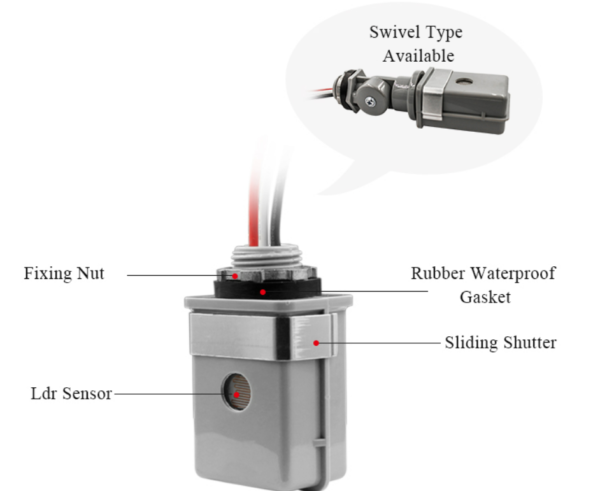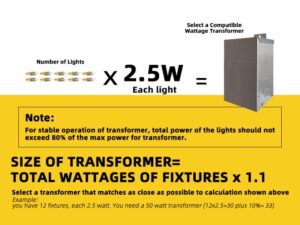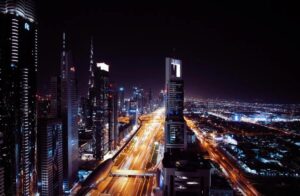Where is the Photocell in Outdoor Lights?
Introduction
photocells, more commonly known as dusk to dawn cells have emerged as one of the most handy inventions in the recent years as the global energy needs keep rising. Especially when it comes to outdoor lights, photocells are a means of saving energy very efficiently while at the same time, they free you of the worry about switching the lights off and on manually. These tiny but marvelous inventions help by automating the operation of light fixtures whether these are in residential properties, parking lots, industrial infrastructure, or street lights.
In addition to adding to the beauty of the infrastructure and providing light only when needed, these photocells help add a layer of security to any place by providing uninterrupted light throughout the night.
How Photocells Work

The dusk to dawn photocells work by using ambient light as a stimulus. They operate by the use of a resistor which senses the changes in light’s intensity. As the light decreases at dusk, the resistance increases and the circuit opens, allowing the lights to be switched on automatically. Conversely, when the light starts increasing at dawn, the resistance decreases and the circuit is closed, hence the lights are switched on.
Hence, using sunlight, the photocells automate the activation and de activation of light fixtures, without a need for manual interference. The exact time of turning the lights on and off depends on how sensitive the photocells are to light.
One of the most marvellous things about photocell operated light fixtures is that these do not need to be adjusted according to the changing span of daylight. As the daylight span changes with season throughout the year, the photocells are still able to adjust accordingly. This is because these are are operated by changing intensity of light and are not dependent upon time.
The dusk to dawn photocells work by using ambient light as a stimulus. They operate by the use of a resistor which senses the changes in light’s intensity. As the light decreases at dusk, the resistance increases and the circuit opens, allowing the lights to be switched on automatically. Conversely, when the light starts increasing at dawn, the resistance decreases and the circuit is closed, hence the lights are switched on.
Hence, using sunlight, the photocells automate the activation and de activation of light fixtures, without a need for manual interference. The exact time of turning the lights on and off depends on how sensitive the photocells are to light.
One of the most marvellous things about photocell operated light fixtures is that these do not need to be adjusted according to the changing span of daylight. As the daylight span changes with season throughout the year, the photocells are still able to adjust accordingly. This is because these are are operated by changing intensity of light and are not dependent upon time.
Where is the Photocell in outdoor Lights?

The photocells are fixed in light fixtures and their position may vary depending on the structure of the fixture. Depending upon variations in design, these photocells can be located at different positions. Here are some of the common locations for a dusk to dawn photocell in outdoor lights:
• On Top of the Light Fixture
Most commonly, small photocells are installed on top of the light fixtures. Here, they can receive and sense the ambient light conveniently and automate the operation of light fixture accordingly.
• Adjacent to Bulb Socket
In many light fixtures, especially those with a design resembling a lantern, the photocells are installed near the bulb sockets. These can be integrated directly into the socket or can have their own separate socket adjacent to the bulb socket.
• On One Side of the Light Fixture
Some photocells can be installed on one side of the fixture as well. They can be designed as a flat panel that integrates with the surface of the fixture or can be made into a small protruding component.
• Into the Power Supply Structure of the Fixture
Some photocell units may be designed in a way that they can be fixed directly into the power supply unit or wiring of the light fixture.
• In a Separate Enclosure
When the outdoor lighting system is complicated or large in size, the photocells are mostly provided with a separate unit that is connected to the main light fixture.
In most cases, it is easy to locate a photocell, but if you cannot figure out where exactly is the photocell located in your light fixture, you should either consult the manufacturer or check the manual for specifications and installation location of the photocell. Make sure, the photocell is located in a position where it is exposed to the light and nothing covers it in a way that the sunlight incident on it is blocked.
Conclusion
In conclusion, the presence of photocells in outdoor lights plays a crucial role in enhancing both convenience and energy efficiency. These light sensors are strategically placed in various locations depending on the design of the fixture, ensuring automatic activation and deactivation based on ambient light levels. Whether located on the top, near the bulb socket, on the side, integrated into the power supply housing, or in a separate enclosure, photocells contribute to the seamless functioning of outdoor lights and this can be done only when you go for quality photocells, as are guaranteed by LONG-JOIN.com.
By allowing lights to respond to the changing levels of natural light, they not only provide illumination when needed but also contribute to energy conservation. Understanding the location of the photocell in your outdoor light is essential for proper maintenance and troubleshooting. As technology continues to advance, incorporating smart sensors and controls into outdoor lighting systems further enhances their efficiency and adaptability to the surrounding environment.
Conclusion
https://www.theworldcounts.com/challenges/climate-change/energy/global-energy-consumption#:~:text=Global%20energy%20consumption%20only%20going%20up&text=From%202000%20to%202040%2C%20this,amount%20of%20energy%20consumed%20worldwide.






